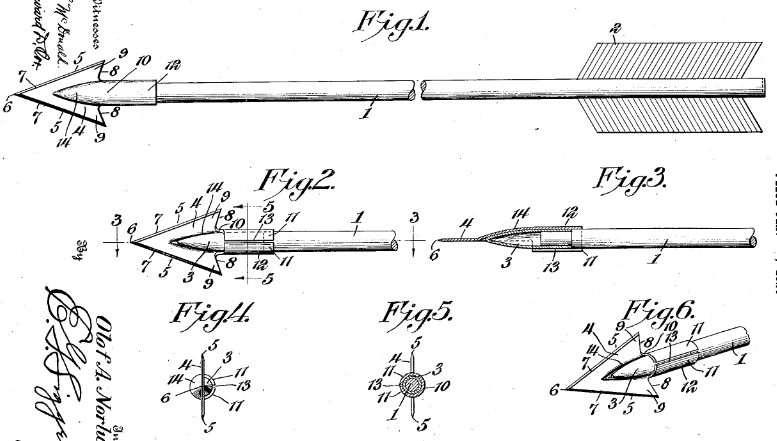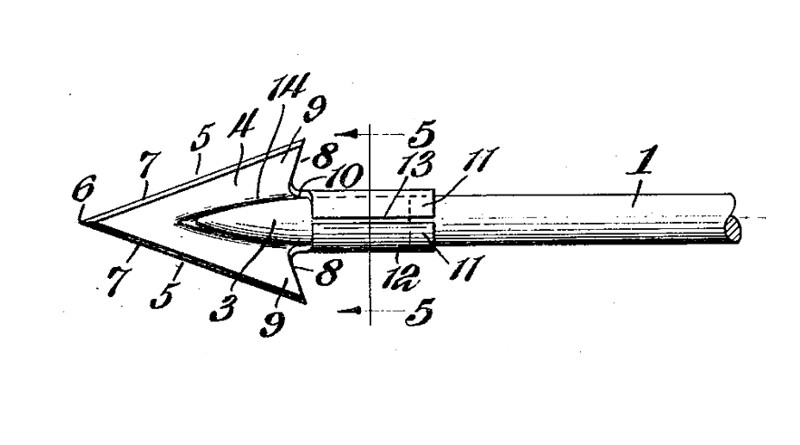US1,604,713 – One of the Earliest U.S. Patented Broadhead Points
Early humans used projectile points made of stone, bone, fire hardened wood and even alligator gar fish scales. Later, the use of copper metal projectile points started during the Copper Age, which occurred between the years 3500 – 2000 BCE. Next, it was discovered that adding tin or arsenic to the copper would create an alloy much harder than copper alone. It was only natural that humans would start making bronze projectile points during the Bronze Age, which lasted from 2200 – 700 BCE. The Iron Age started when the process of making iron and steel developed to the point where it became more economical to use over the equivalent items of bronze. Early iron and steel weapons were softer and inferior compared to those made of bronze. However bronze required both copper, tin and or arsenic which were relatively rare and geographically located in different countries, requiring their importation from Europe and Asia. Iron ore was abundant. Around 1200 BCE, disappearing trade routes that supplied copper, tin and arsenic were disrupted, and as a result made the production of bronze expensive in comparison to those made of iron and steel. Bronze arrowheads would continue to be used until around 1000 CE, but in decreasing amounts as time passed.
On Oct. 26, 1926, one of the Earliest U.S. patent US1,604,713 for an arrow broadhead point was obtained. The patent is, entitled, “Detachable Arrow Head,” and was for a metallic arrowhead, made from hardened sheet steel. Additionally, the arrowhead was designed to be attached to the end of an ordinary arrow used by archers for target shooting and amusement. As a result, the ordinary arrow could now be used for hunting.

The arrowhead was specifically designed to penetrate flesh with the cutting edges on the flaring sides. Furthermore, the arrowhead had retaining hooks or barbs and was formed from a single piece of sheet metal, cut and pressed into the final state. The arrowhead was designed to be frictionally held onto the end of the arrow shaft and easily removed when the user wanted to use the arrow for target practice.
The US1,604,713 arrowhead set the stage for many broadhead patents to come. Since 1926, advancements in broadhead point technology and patents exploded. These advancements include: points with replaceable cutting edges, cutting edges that expand on contact, cutting edges that have a helical design which causes the arrow to rotate upon impact, and many more features designed to improve the hunter’s success in the field.

